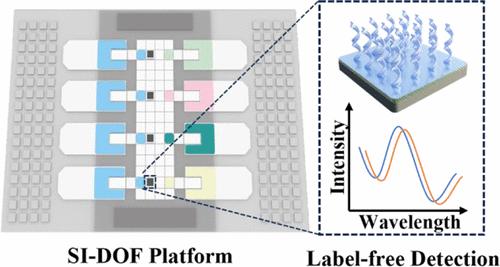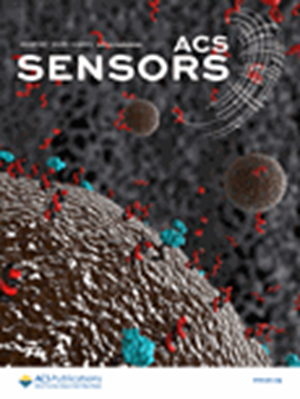Self-Interference Digital Optofluidic Genotyping for Integrated and Automated Label-Free Pathogen Detection
IF 8.2
1区 化学
Q1 CHEMISTRY, ANALYTICAL
引用次数: 0
Abstract
Pathogen, prevalent in both natural and human environments, cause approximately 4.95 million deaths annually, ranking them among the top contributors to global mortality. Traditional pathogen detection methods, reliant on microscopy and cultivation, are slow and labor-intensive and often produce subjective results. While nucleic acid amplification techniques such as polymerase chain reaction offer genetic accuracy, they necessitate costly laboratory equipment and skilled personnel. Consequently, isothermal amplification methods like recombinase polymerase amplification (RPA) have attracted interest for their rapid and straightforward operations. However, these methods face challenges in specificity and automated sample processing. In this study, we introduce a self-interferometric digital optofluidic platform incorporating asymmetric direct solid-phase RPA for real-time, label-free, and automated pathogen genotyping. By integration of digital microfluidics with a DNA monolayer detection method using hyperspectral interferometry, this platform enables rapid, specific, and sensitive pathogen detection without the need for exogenous labeling or complex procedures. The system demonstrated high sensitivity (10 CFU·mL–1), specificity (differentiating four Candida species), detection efficiency (fully automated within 50 min for Gram-negative bacteria), and throughput (simultaneous detection of four indices). This integrated approach to pathogen quantitation on a single microfluidic chip represents a significant advancement in rapid pathogen diagnostics, providing a practical solution for timely pathogen detection and analysis.

自干涉数字光流体基因分型用于集成式无标记病原体自动检测
病原体普遍存在于自然和人类环境中,每年造成约 495 万人死亡,是造成全球死亡的首要因素之一。传统的病原体检测方法依赖显微镜和培养,既缓慢又耗费人力,而且结果往往很主观。聚合酶链反应等核酸扩增技术虽然能提供准确的遗传信息,但需要昂贵的实验室设备和熟练的工作人员。因此,重组酶聚合酶扩增(RPA)等等温扩增方法因其快速、直接的操作而备受关注。然而,这些方法在特异性和自动化样品处理方面面临挑战。在本研究中,我们介绍了一种自干涉数字光流体平台,该平台结合了非对称直接固相 RPA,可用于实时、无标记和自动化病原体基因分型。通过将数字微流控技术与使用高光谱干涉仪的 DNA 单层检测方法相结合,该平台无需外源标记或复杂的程序,即可实现快速、特异、灵敏的病原体检测。该系统具有高灵敏度(10 CFU-mL-1)、高特异性(区分四种念珠菌)、高检测效率(50 分钟内全自动检测革兰氏阴性菌)和高通量(同时检测四种指数)。这种在单个微流控芯片上进行病原体定量的集成方法是病原体快速诊断领域的一大进步,为及时检测和分析病原体提供了实用的解决方案。
本文章由计算机程序翻译,如有差异,请以英文原文为准。
求助全文
约1分钟内获得全文
求助全文
来源期刊

ACS Sensors
Chemical Engineering-Bioengineering
CiteScore
14.50
自引率
3.40%
发文量
372
期刊介绍:
ACS Sensors is a peer-reviewed research journal that focuses on the dissemination of new and original knowledge in the field of sensor science, particularly those that selectively sense chemical or biological species or processes. The journal covers a broad range of topics, including but not limited to biosensors, chemical sensors, gas sensors, intracellular sensors, single molecule sensors, cell chips, and microfluidic devices. It aims to publish articles that address conceptual advances in sensing technology applicable to various types of analytes or application papers that report on the use of existing sensing concepts in new ways or for new analytes.
 求助内容:
求助内容: 应助结果提醒方式:
应助结果提醒方式:


